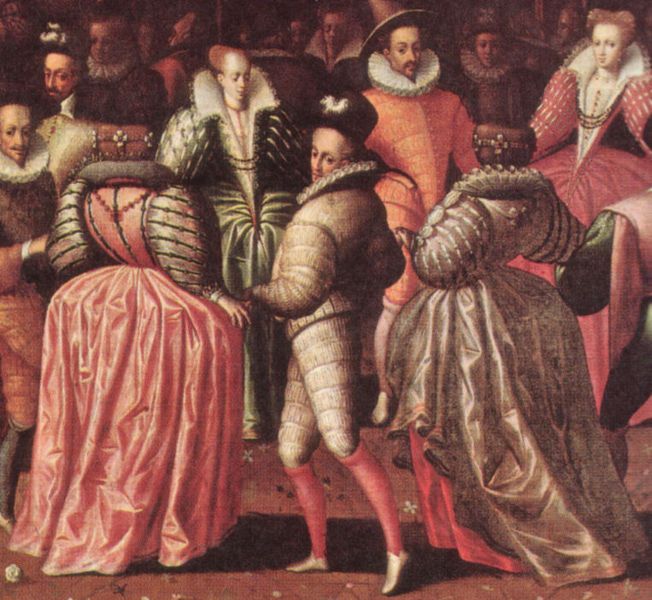Elizabethan Dance and Dancers
After millennia of Dark Ages, the culture of Europe dance remained stagnant and undeveloped, but all that changed with the arrival of 13th century. During that time, strong economic growth, establishment of safe trade routes, and technological advancements finally enabled the birth of the high class of Italian merchants and nobles whoto set their sights on art, music and dance. After their initial steps in creating 13th century Renaissance of European continent, their efforts quickly spread across the western lands, finally coming to the England where dance was accepted with open arms.
During the reign of Queen Elizabeth I between 1533 and 1603, music and dance received unprecedented amount of refinement and advancement, which received highest points of regard and respect from surrounding European countries and entire Western Civilization. Queen Elizabeth's passion for musical arts gave birth to the several generations of celebrated musicians and dance teachers who created whole new suite of dances that were regularly used by both nobility and common people. During that time dancing was considered as "a wholesome recreation of the mind and also an exercise of the body".

The dances that were used by Upper class and Court were most often imported from the other countries. Merchants and nobles who traveled all across Europe brought back to England dances from Italy, Span and France, and their influence led to the creation of new styles of dance. Celebrated dancing masters of Elizabethan Era created detailed manuals (with specific instructions for dance steps, sliding, stamping, jumping and other moves) that were distributed across entire England, teaching end educating High class nobility to the wonders of European styles. Some of the most notable dance masters of that time were Italian and French, such as Frenchman Thoinot Arbeau (1520 - 1595), Italan Fabritio Caroso (1536 - 1605) and Cesare Negri (1535-1604).
Influence of Queen Elizabeth on the dance culture was profound. She herself was proficient in many instruments, and practiced many style of dances every day (some reports say that she danced as many of seven Galliards each morning, a very demanding and energetic style of dance). Because of that, she demanded of entire court to know intricacies of musical and dancing arts. Popularity of dance went to such degree that some of the great political and romantic court battles of that time were fought not by political means, but on the dancing floors of London Court.
Some of the most notable dances of the Elizabethan era High class dances were Paval (which required procession of men and women who only slightly touched their fingers), The Galliard (quick and energetic dance), The Almain (preformed with keyboard and lute instruments), The Volt (only Elizabethan dance that allowed embrace of dancers), The Gavotte (very popular medium tempo dance that incorporated kiss as one of its moves), The Courant or Courante (slow moving French dance) and Ballet (which was imported from Italy and danced by both novices and professionals).
After the death of Queen Elizabeth, musical arts remained popular in England for only a short period of time before it became overshadowed in popularity and accomplishments by early Baroque French styles.
